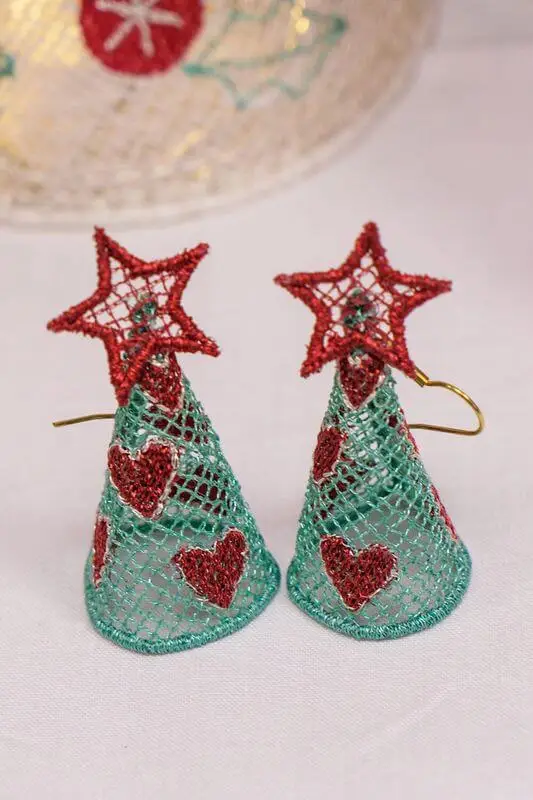How to Optimize Embroidery Design by Changing Entry and Exit Points
In this tutorial, we demonstrate how to optimize the production of your embroidery design by adjusting the entry and exit points. Using a simple lettering design as an example, we walk through the process of breaking apart letters, switching to manual mode, and customizing the stitching sequence. You’ll learn how to set specific entry and exit points to control the order of stitching, ensuring the design is embroidered exactly as you envision.
We also show how the software automatically adds thread trims when letters are separated and how to modify the sequence to achieve a more efficient and visually appealing result. By the end of the video, you’ll understand how to use these tools to refine your embroidery workflow and improve the overall quality of your designs.
For advanced customization, we briefly mention the patented re-arrange tool, which allows you to modify design sequences, trim points, and start/exit points simultaneously. This tool is covered in detail in a separate video. Whether you’re a beginner or an experienced embroiderer, this tutorial provides valuable insights to enhance your embroidery projects.
Why Change Entry and Exit Points?
By default, DRAWings PRO will automatically determine the stitching order and entry/exit points of your design elements. While this is often efficient, sometimes it may not produce the desired result. You might find:
- Suboptimal Stitch Order: Elements might stitch in an order that you don’t prefer.
- Long Thread Jumps: Unnecessary long threads jumps may result between design elements.
- Undesired Stitch Direction: You might want a specific part of a design to start and end in a particular area.
Prerequisites
- DRAWings PRO embroidery software
- Basic familiarity with the software interface
Let’s Get Started– Optimize Embroidery Design by Changing Entry and Exit Points
Example Design: We’ll be using a simple example of lettering as our demonstration.
Step 1: Initial Review and Identify Areas for Change
- Load Your Design: Open your design in DRAWings PRO.
- Embroidery Simulation: View the embroidery simulation to understand the current stitching sequence. Notice in the example, the lettering is currently stitching from bottom to top, which you want to change.
Step 2: Break Apart Complex Objects
- Break Apart: If necessary, break the design into separate elements. In this example, you will break the lettering apart into separate letters (I, N, and B).
- Switch to Manual Mode: Switch to manual mode to gain full control over stitching order and entry/exit points. Note: When you break apart the design elements, the software will often automatically insert thread trims.
Step 3: Reorder the Design Elements
- Change Sequence: Reorder design elements as needed. In this example, move the “I” to the beginning of the sequence.
- Note: You can do so directly in the Object Manager list of your design.
Step 4: Modify Entry/Exit Points
- Select an Object: Right-click on the design element you want to adjust (e.g., the letter “I”).
- Access the Menu: From the context menu, go to “Change Entry/Exit” and select “Change Entry Point”.
- Set the Entry Point: The cursor will turn into a crosshair. Hover and click on the location where you want the design element to begin stitching. In our example, click on the top area of the letter “I.”
- Set the Exit Point: Right click on the “I” again. Select “Change Entry/Exit” and choose “Change Exit Point”. Click to select the exit point. In this example we will set it to the bottom left corner.
- Repeat: Follow the same steps to define the entry and exit points for the remaining design elements. In our example, you will set the Entry and Exit points of the “N” letter to the bottom area. Then, set the Entry point of the letter “B” to the bottom.
Step 5: Review the Embroidery Simulation
- Simulate: Run the embroidery simulation again.
- Verify: Observe the updated stitch path. It should now follow your desired sequence, moving from the top of the “I” to the bottom of the “B”.
Important Considerations:
- Manual Control: By setting entry/exit points manually, you gain full control over stitch order and reduce unnecessary trims.
- Thread Jumps: Adjusting points can also minimize the length and number of thread jumps between design elements, resulting in cleaner results.
- Design Complexity: For complex designs, you might need to experiment with different entry and exit points to achieve the desired result.
Conclusion:
By carefully adjusting the entry and exit points of your design elements, you can gain precise control over your embroidery production. This leads to more efficient stitching, reduced thread trimming, and an overall improved embroidery result.
DRAWings PRO Help Group
Happy crafting and don’t forget to share your creations with us in the
DRAWings PRO Help Group!












